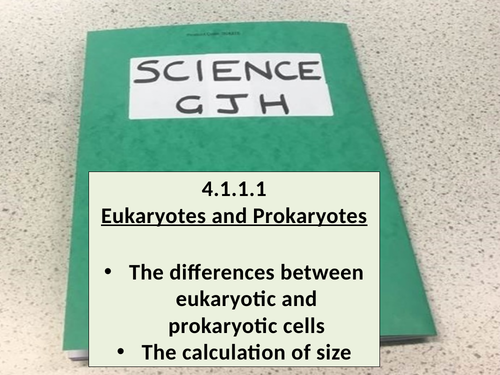



This lesson has been designed to cover the content of specification point 4.1.1.1 (Eukaryotes and prokaryotes) of the AQA GCSE Biology and Combined Science course. The understanding of this topic is fundamental to a lot of the later topics on the course so time has been taken to ensure that the key details are covered whilst engagement levels are kept high through the range of activities.
The lesson begins by asking students to copy a diagram of a bacterial cell from memory before challenging them to recognise anything that is missing so they can discover the lack of the nucleus. Students are introduced to the idea of a prokaryotic cell before important questions are answered such as the fact that the cell still has DNA despite the absence of the nucleus. Key terms such as plasmid are introduced to the students through the use of quiz competitions in an effort to increase the likelihood of these words being remembered. Moving forwards, eukaryotic cells are considered and the common features of both of the cells are discussed and recalled. Finally, students are asked to compare both types of cells in terms of their size before being challenged on a range of mathematical skills in which they have to convert between the units of centimetres, millimetres, micrometres and nanometres.
Something went wrong, please try again later.
A really well thought-out resource. Thank you.
The way the lesson is designed to build up student's knowledge and confidence has been expertly thought through, with fun games along the way.
Fantastic
Report this resourceto let us know if it violates our terms and conditions.
Our customer service team will review your report and will be in touch.